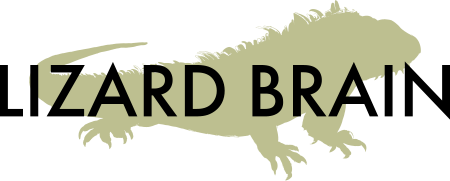Wash, Rinse, Repeat
A vision map can serve as a powerful tool for stakeholder engagement and buy in.
Schedule a working session to review the vision map with a small selection of your key stakeholders. Prepare by printing the latest version of the vision map on 11x17 placemat-sized paper, one for each participant, and a single wall-sized version. Introduce the vision map to the group by saying, "A few of us got together and sketched out some ideas. This is the way we see it. We're not saying it's the only way to look at this, but it's what we came up with, and we're sharing it with you to hear what you think about it."
Resist the temptation to present it as a well-polished, complete deliverable. Most of your stakeholders will be seeing this for the first time, and they will feel intimidated and pressured to provide insightful feedback in a few minutes while others have had hours or days refining their ideas. This isn’t the time to impress your stakeholders by how much time and thought you’ve put into the project, or how much knowledge and experience you bring to it, or what creative solutions you’ve thought of. Be authentic as you ask for their help and insight.
Give a very brief walkthrough of the vision map, but don’t read every detail. Cover only the high-level themes. Then say, “It’s important for me to hear your feedback and get your ideas. And because you read a lot faster than I talk, I’m going to be quiet for the next five minutes and let you explore the visual on your own. Take notes. Mark it up. Then, we’ll go around the room, and I’ll capture your input and edits.”
After your stakeholders have time to read, solicit their feedback. You could choose a structured model for feedback, such as I Like I Wish What If, or One Breath Feedback, or One Word Feedback, but it’s best to have an open, facilitated discussion. Make sure every participant is given air time to avoid spending too much time on one aspect of the vision map. Capture the feedback using a combination of graphic recording and direct edits on a version of the vision map large enough for everyone in the room to see. Have a note-taker on hand to capture the discussions between stakeholders. These notes can serve as raw material for more detailed content for the vision map.
Remind yourself that the feedback your stakeholders share is coming from the perspective of their fresh eyes. You have been in the thick of designing and refining the vision map, and it’s easy to lose perspective while working the details. Trust that what you hear is the honest opinion of those who are sharing it.
Thank your stakeholders for their feedback. At all costs, resist the urge to explain or defend. Just make note of what you hear. After the feedback session, meet with your core design team and discuss what you captured, point by point. THIS is the time to go into detail. Decide among yourselves how to incorporate the feedback you received. This may be in the form of edits to the vision map, or in depth discussions with the individual who offered the feedback to better understand their perspective, or in the scope of the vision map overall.
When the next version of the vision map is ready, invite a larger selection of your stakeholders to another feedback session, as well as the original group. They’ll see that their voices were heard, as they see their words reflected in the next version of the vision map. As they see themselves as helping to shape the vision for the future, they’ll be more engaged in the changes to come.
Wash, rinse, and repeat the process.

